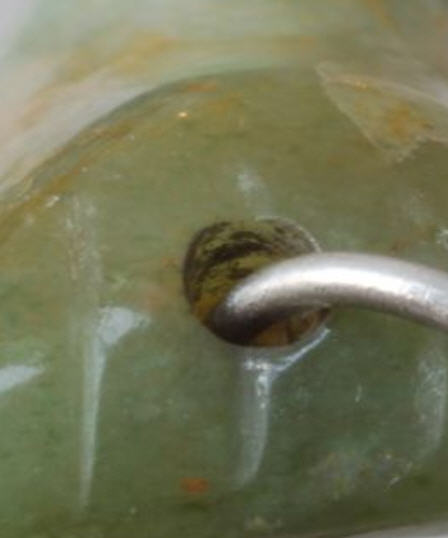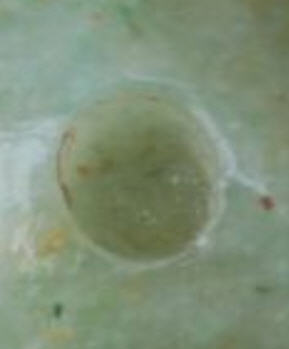
|
Subject:Re: BIRD
Posted By: Bill Sun, Mar 16, 2008
Tiger:
In my opinion, your bird is a very beautiful piece.
I agreed with others that it was made of aventurine because I have just studied some modern Hongshan style carvings that were made of Indian aventurine. The unique green specks in it and its semitransluscency separates it from jade. It cannot be B.C. jade. If the color shown on its picture is its real color, then this may not be Indian aventurine and may be a unique type of aventurien that could only be found in Canada. (*I do not know if aventurine can be found in Canada without researches.) You may want to find out if any similar aventurine can be found in Canada.
Like you said the crack might be a recent crack otherwise you should see some color stain inside the crack if it had been buried.
I believe your bird is an old carving and was not made modern because:
(1) On the second picture you show, the tail end of the bird. those long vertical carving lines were made with some types of manual tu and not with modern tools because it is wider in its midst and narrow at its ends. Another evidence is its hole where the ring goes through, if you look inside you will see some black stain around its inside edge. Most of the time, grease was put inside such hole in order to polish it or in facilitating the drilling of such a hole. In older pieces, the grease attracted dirts after a long while and as a result black stains would be found inside the hole. You would not see such black stains in newly made pieces. Of course, it is possible for fakers to put artificial stains inside the hole to make it look old. Also, use your finger to feel around the edge of the hole (or holes, I cannot see the other hole)and feel if the edges are smooth. In new pieces, the edges of the holes are always very sharp. Another thing you can do is if you may take the ring off and observe how the hole looks, if the outside of the hole is bigger than the inside of the hole (like a trumpet) that you know it is more than likely the hole was made with a solid stone or wood drill (or a soft metal drill) head because when such holes was drilled the drill head would be worn down and sometimes more than one drill heads would have to be used to complete the drilling of such hole. If this material is indeed aventurine then it would have a hardness of 6.5-7 and it would be much tougher than the drill head. It is like putting a pencil (drill head) into a pencil sharpener (the hole), the tip of the pencil (drill head) would become narrower as it was sharpened, therefore the inside diameter of such hole would be wider outside and narrower as it goes further inside. With a modern metal drill (with diamond grit) such a hole would be in equal diameter all the way through. (see enlarge picture)
(2) I also like its eye (see enlarge picture) because again I do not believe was made with modern tools.
Due to the limit of the resolution of the pictures being allowed to be posted in this site. I cannot examine any of the tool marks or carving lines found on your bird.
However, I believe it is quite possible your bird is an older piece and you may want to study it more or ask somebody who have been collecting old stone carvings (American, Chinese, etc.) to examine it for you. They would look in confirming if your piece was made of modern tools or older carving tools including stone tools.
This is only my opinion and hope I did not confuse you.
Bill




|

